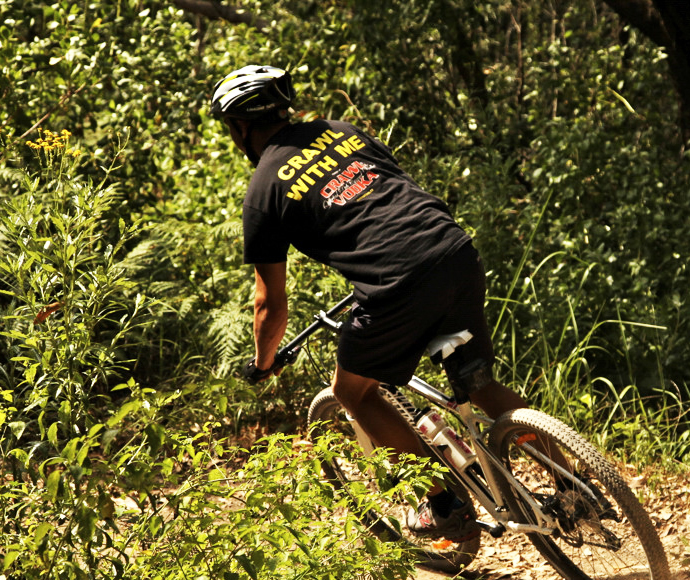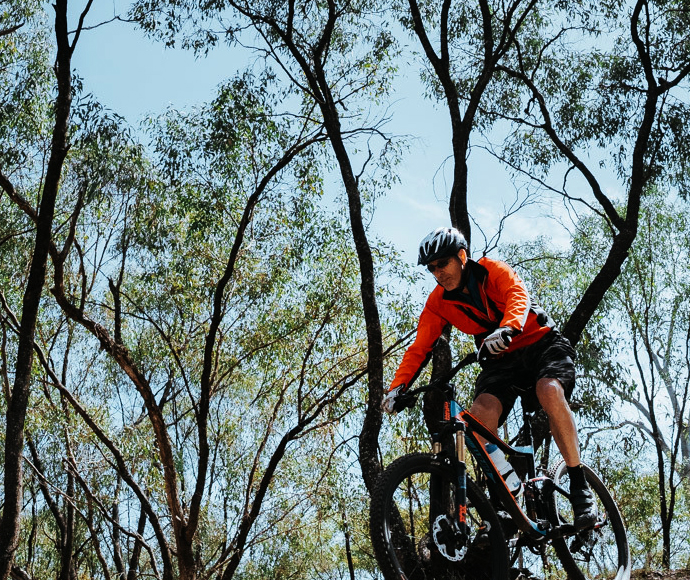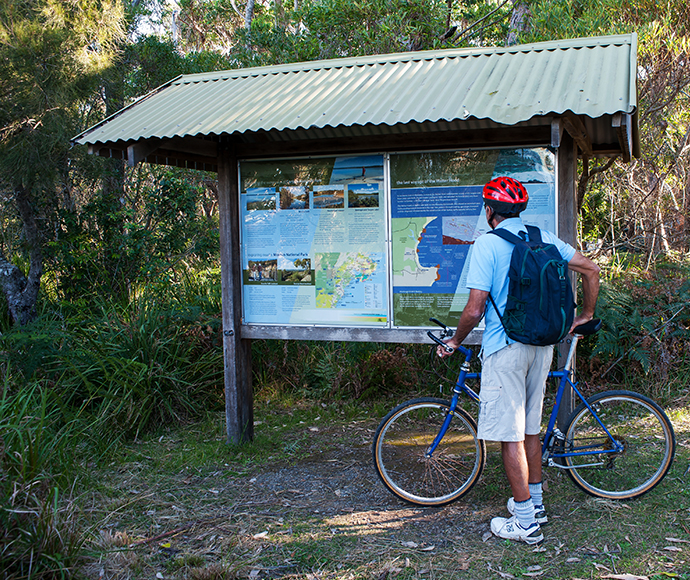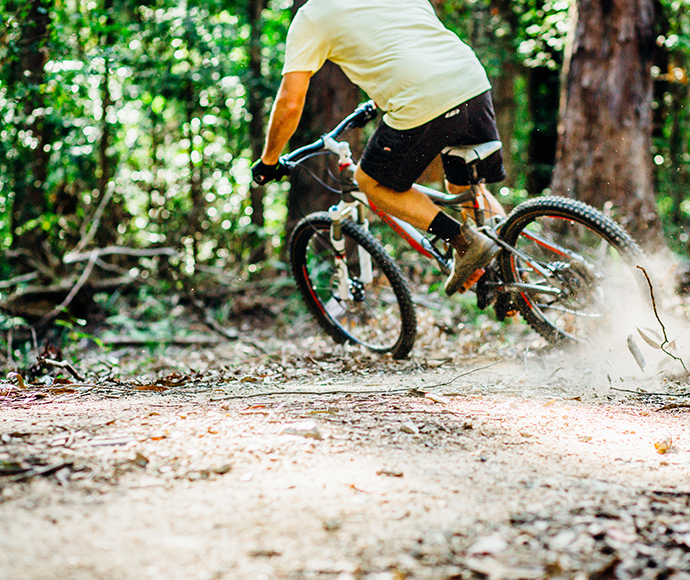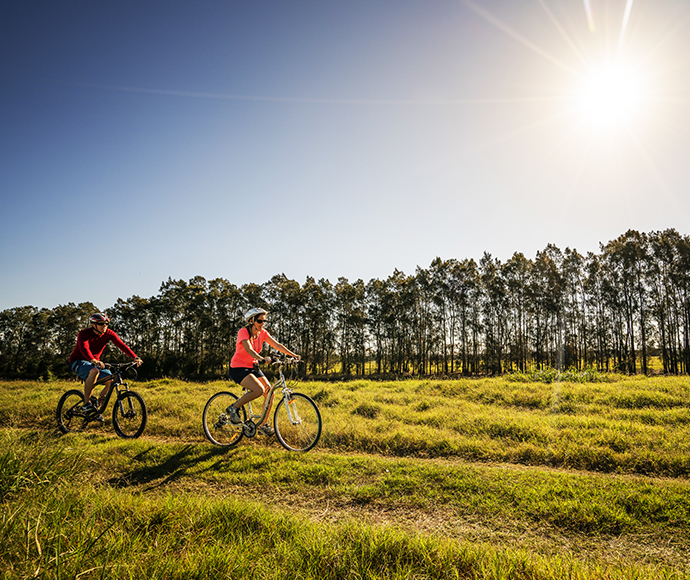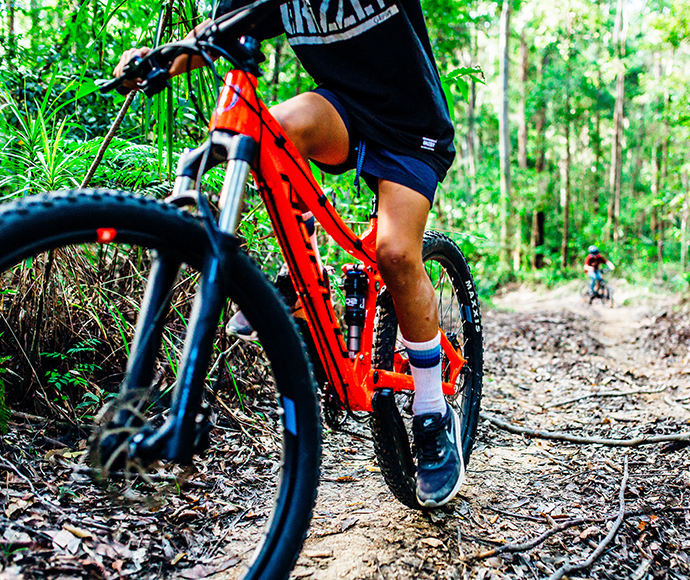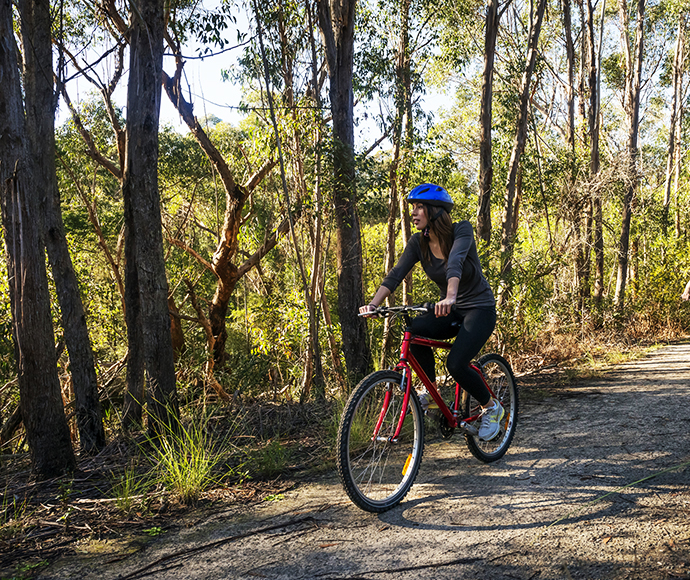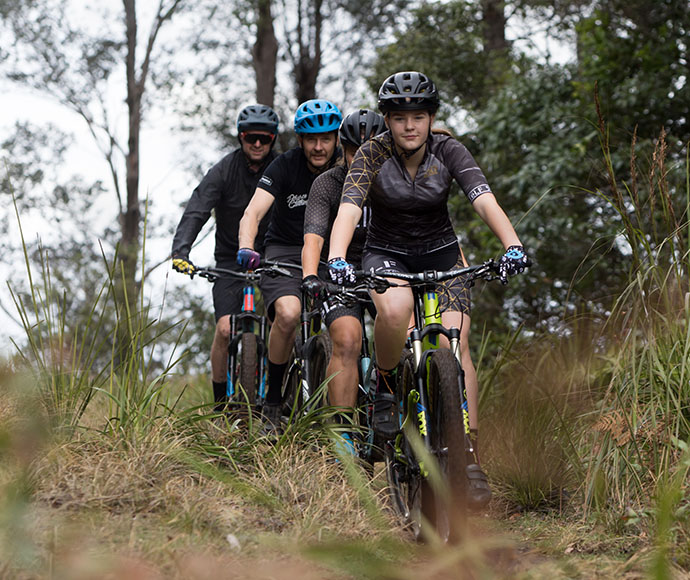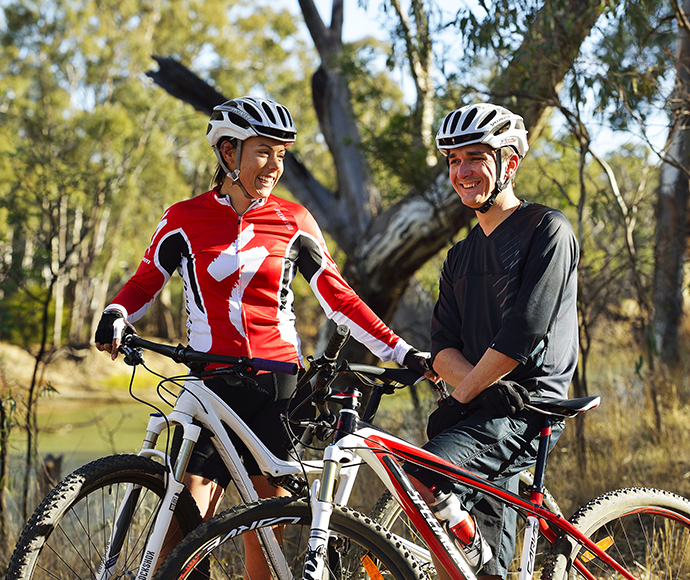Increasing numbers of people are realising the physical and mental health benefits of cycling and connecting with nature in national parks.
Many communities throughout Australia are also generating economic benefits by promoting opportunities for cycling.
The new Cycling strategy has been prepared to capitalise on these opportunities.
Cycling policy
The Cycling policy has been updated in parallel to the cycling strategy. It acknowledges that cycling, including mountain biking, is a popular and healthy recreational activity that can raise awareness, appreciation and understanding of the natural environment.
It also recognises that cycling can impact park values and other park users and must be managed consistently with relevant legislation and the objectives for which a park is reserved.
Cycling strategy
'Cycling experiences in our parks will be sustainable, located in suitable locations that ensure the protection of natural and cultural heritage values, and will support tourism and deliver health benefits to communities'.
The new Cycling strategy outlines the vision, objectives and priorities for providing cycling experiences in NSW national parks.
It provides a clear framework for managing cycling in national parks, providing for a variety of sustainable cycling experiences, including single track, tracks with technical features, road cycling, cycle paths and management trails, while prioritising the protection of conservation values.
We will work collaboratively with cyclists, stakeholders and other land managers to manage key challenges, including unauthorised tracks, the safety and enjoyment of visitors on multi-use trails and the provision of appropriate park visitor facilities.
Guidelines for implementation
The Cycling strategy: guidelines for implementation detail the processes and procedures that the National Parks and Wildlife Service will apply to assess, approve, manage and monitor cycling opportunities in NSW national parks in accordance withthe Cycling strategy.
The guidelines provide a statewide framework for the sustainable management of cycling experiences in our parks to ensure the conservation of the natural and cultural heritage values that make our parks so unique. The guidelines include:
- how we determine which parks are appropriate for cycling activities
- the development and assessment process for new authorised tracks and networks
- processes for the closure and rehabilitation of unauthorised tracks
- how proponents of cycling proposals and other stakeholders can work with us
- how we will plan for and assess cycling proposals and manage cycling experiences.
Who was involved in preparing the new strategy?
In addition to the advice of our expert staff, public feedback was sought on the draft cycling strategy and guidelines to ensure the views and opinions of varying interest groups were considered.
We received over 1,000 submissions from a range of stakeholders, including cycling clubs, groups and individuals, conservationists and other recreational users. These submissions have assisted in the finalisation of the strategy.
How does the strategy support conservation of natural and cultural heritage values?
Through coordinated planning, assessment and monitoring processes, we will continue to conserve the parks' natural and cultural values as a priority. This will be achieved through park zoning, closure and rehabilitation of unauthorised tracks, incorporating educational learning opportunities into experiences and monitoring track/network performance. All tracks require environmental impact assessment before construction.
Does this mean there will be more cycling opportunities in NSW national parks?
A number of park-based projects are progressing throughout the state. These aim to increase the amount and diversity of cycling experiences in parks. They all involve careful planning to ensure they are consistent with the Cycling policy and the Cycling strategy. They also involve collaboration with stakeholders and environmental impact assessment.
More cycling opportunities will be developed. Parks are irreplaceable, and many are sensitive to any disturbance. A thorough and cautious approach is necessary, and this will take time.
To discover more, visit Things to do (cycling) on the National Parks and Wildlife Service website.
Get involved
- Read our updated policy and strategy to better understand the framework in which we operate.
- Become a volunteer. Volunteer work is a great way to connect with and conserve our environment for generations to come. There are some great volunteering programs happening in our parks to support cycling experiences. For more information you can contact your local National Parks and Wildlife Service area office or visit the National Parks and Wildlife Service website.
- Join a local mountain biking or cycling group.
